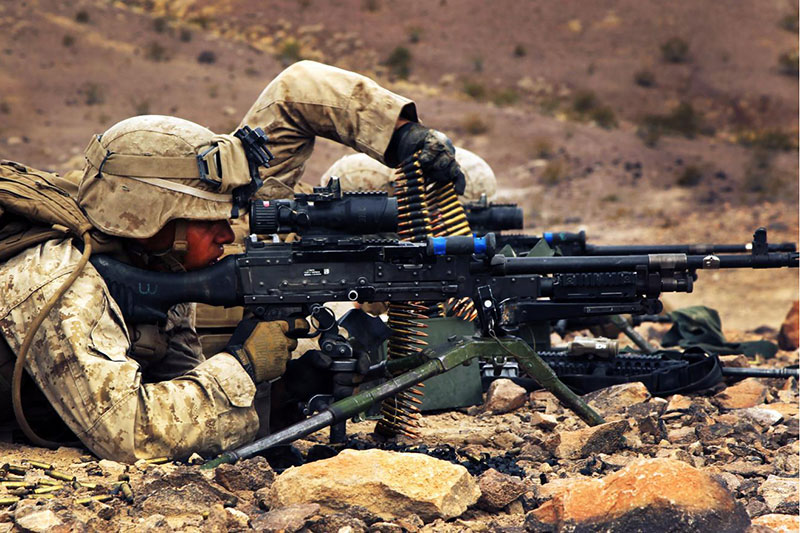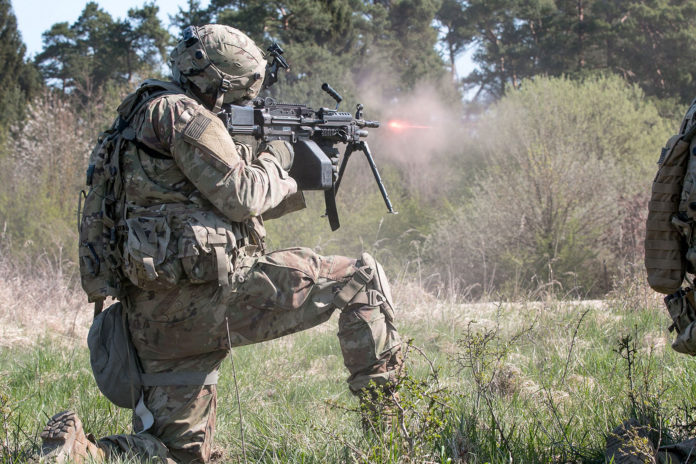It seems like, the soldiers will soon find their guns and rifles with the new and advanced technologies which are used in many other products like computers, smartphones, and cameras.
Recently, the U.S. Army weapons officials invited defense firms to design and build prototypes of an advanced fire control system that could equip the service’s Next-Generation Squad Weapon with wind-sensing, facial-recognition technology, and automatic targeting software, according to Military.com. The new software could be useful for the soldiers to be more precise and effective in battle.
The contractors will have a chance to win up to two five-year agreements to develop a prototype of the weapon. Scope of work will include the delivery of 115 fire control platforms, spare components, and accessories that will support the testing of the prototypes for 14 months.
The Army hopes to deploy thousands of these new facial recognition-equipped rifles within three years. And according to the plan, these weapons will come in both semi and fully-automatic versions.

The Army’s Next-Generation Squad Weapon
The Army’s new solicitation for the Next Generation Squad Weapons series of infantry weapons lays out what the service wants from industry, Military.com reports. NGSW is an effort to design a new infantry rifle or carbine to replace the M4A1 carbine and a new squad automatic weapon to replace the M249 Squad Automatic Weapon.
The M4A1 is a fully automatic variant of the M4 carbine – a shorter and lighter variant of the M16 and went into service in 1994. While the M249 light machine gun was first brought into service in the late 1980s.
Since then, the warfare has changed a lot, the Army feels it has to catch up to do. One of the chief requirements for both guns is a ballistic computer capable of projecting, the exact impact point of a bullet on a pair of goggles, monocular eyepiece, or weapon-mounted optic.
Requirements in detail
The Army expects that the weapon would be equipped with an adjusted aiming point that considers range to target, atmospheric conditions, and ballistics of weapon and ammunition. Also, it should have a wireless communication system and capable of transmitting fire control data such as range to target, ballistic solution, and temperature. In addition, it should come with a wired port that will send and receive data and allow for software updates and a start time within “1.0 seconds” from off to fully active, using common batteries such as AA, CR123 or CR2032.
The Army may request iterative prototyping efforts to achieve higher-level performance capabilities just like, advanced camera-based capabilities such as automatic target recognition, target tracking, and facial recognition. Weapon stabilization and wind sensing such as local wind data, down-range wind sensing, and wind compensated shooting solutions. Advanced ruggedization such as abrasion resistant lenses and hydrophobic lenses that repel sweat and require less cleaning to remove smudges.
Interested firms have until Nov. 4 to respond to the solicitation, Military.com noted.
We can imagine how the use of facial recognition could prevent soldiers from shooting civilians or making other mistakes. But there are some questions remain on how the facial recognition system will be developed and who it will be able to recognize.
